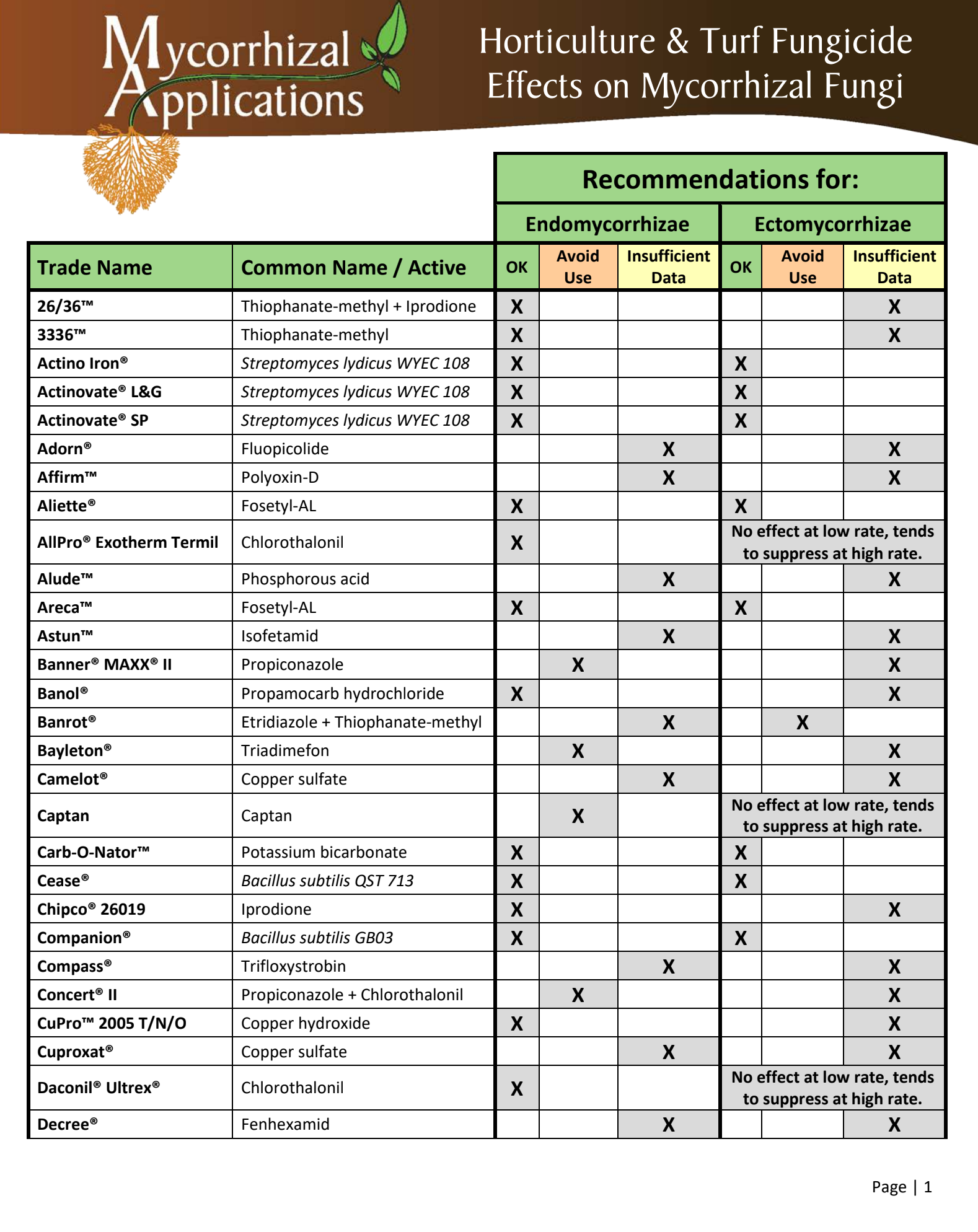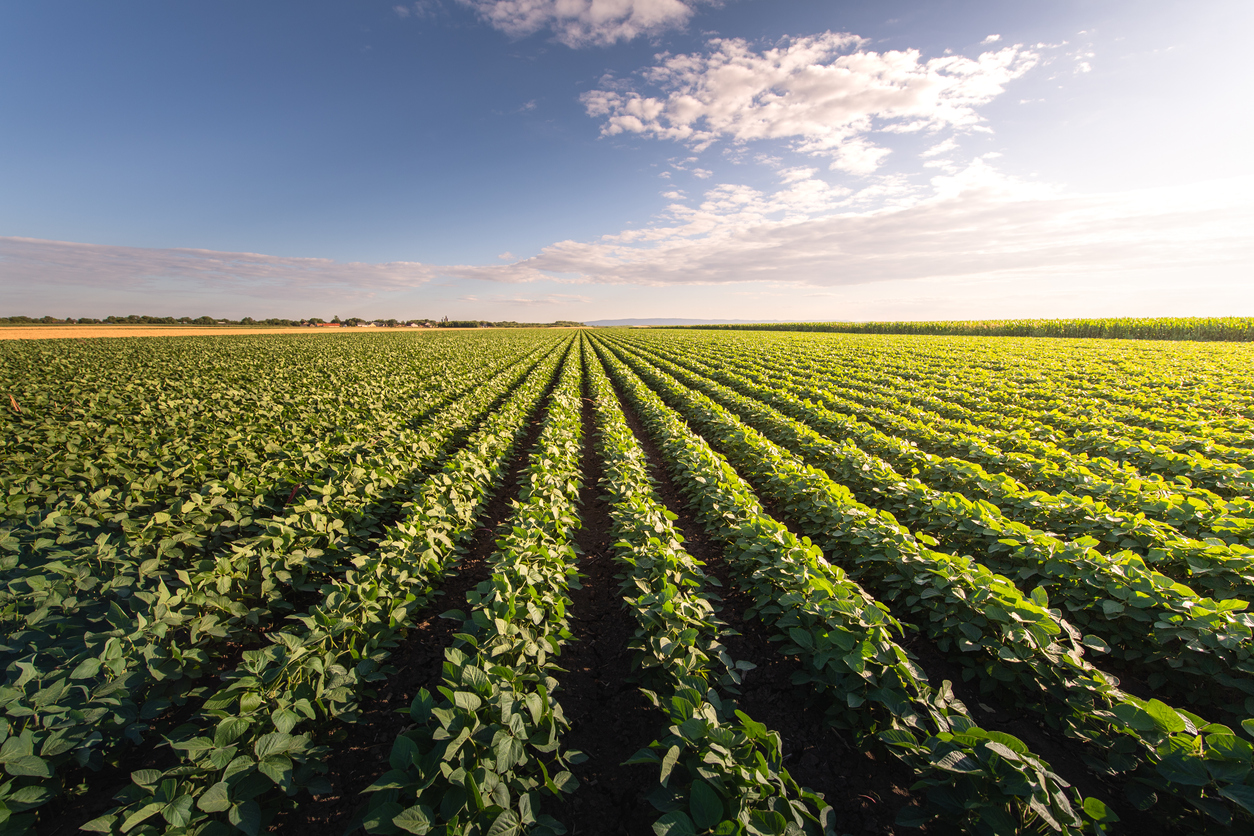Horticulture & Turf Fungicide Effects on Mycorrhizal Fungi

General Observations: *The longer the wait to apply any fungicide after mycorrhizal fungi inoculation, the better for the mycorrhizal fungi development. **Most foliar sprays of any fungicide (except systemics such as Bayleton) have little effect on mycorrhizal fungi. This chart is updated periodically, as new products are added, and results of new trials are published. Please visit www.mycorrhizae.com or contact your Mycorrhizal Applications Representative for the latest version of this chart.


